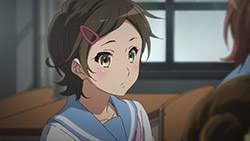 |
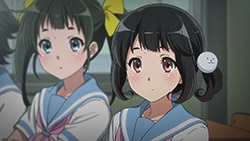 |
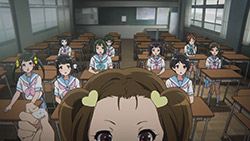 |
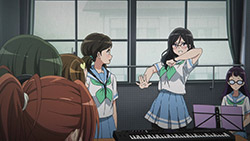 |
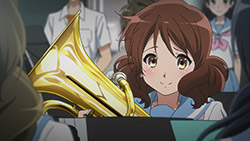 |
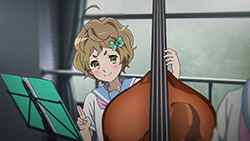 |
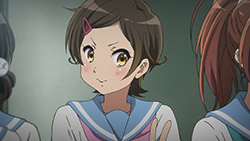 |
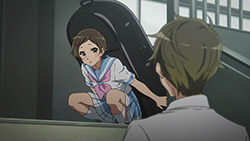 |
 |
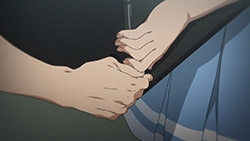 |
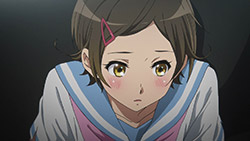 |
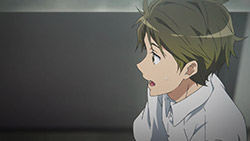 |
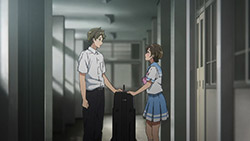 |
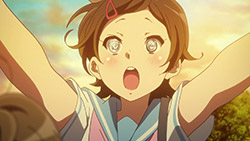 |
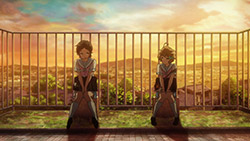 |
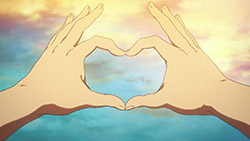 |
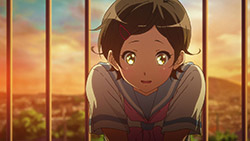 |
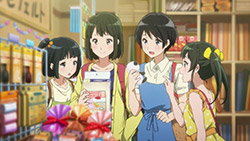 |
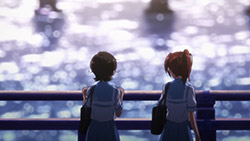 |
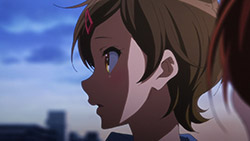 |
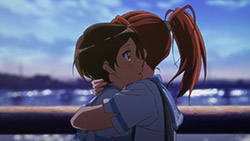 |
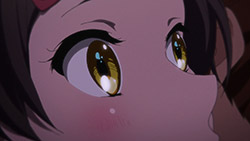 |
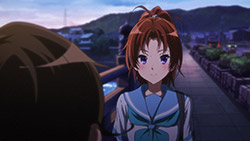 |
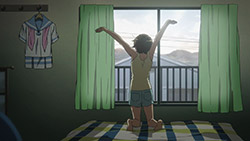 |
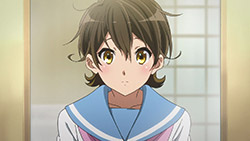 |
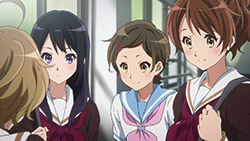 |
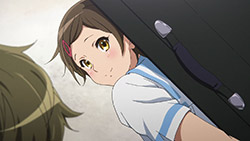 |
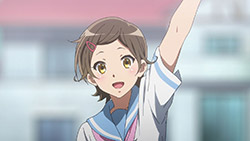 |
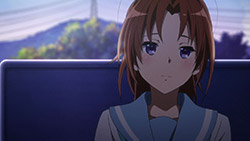 |
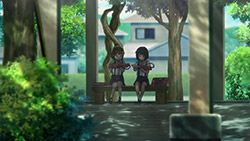 |
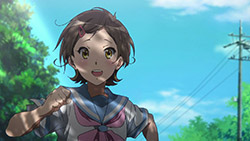 |
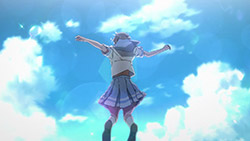 |
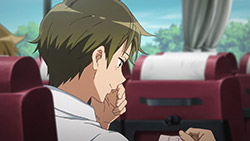 |
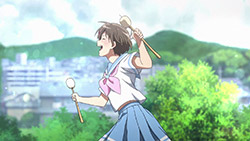 |
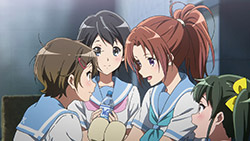 |
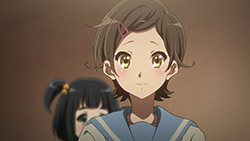 |
“Kakedasu Monaka”A Different Perspective – Team Monaka: Ah, it feels good to blog Hibike! Euphonium once again, even if it’s only one episode. It seems like forever ago when the first season came to an end in June. It’s December now – Christmas Eve as I write this – and yet I feel like I’ve been transported back to the blistering summer heat in a Japanese high school far, far away… and it feels great! It’s no secret how much I adored Hibike! Euphonium, so when this OVA was announced I was over the moon and ready for more. I didn’t expect anything dramatic and essential to the story, because the first season had already wrapped everything up nicely. What we got was pretty much what I was hoping for: a different perspective of the band drama, as Kitauji High School prepare for the Kyoto Concert Band Competition. And best of all, we got to see it from through the eyes of a character we didn’t get enough focus on in the first season, Katou Hazuki. Hazuki’s Time to Shine: Remember Team Monaka? They were formed from the rejects who never made the auditions, and appeared in the final episode to cheer on the band before they headed off to victory. This episode takes place between episodes 10-13, showing what happened with those girls, as everyone else was focused on practicing. Set after the festival, we dive back into that awkward time where Hazuki had not long confessed to Shuuichi. While their interactions were uncomfortable at first, I appreciated what was being done here. In the TV series, these two never had many scenes after Hazuki got rejected, up until the final episode when Shuuichi helped her lift the instruments into the van. Here, we fill in the gaps, witnessing their awkward encounters leading up to the concert. I’ve always stated that I preferred Hazuki/Shuiichi to Kumiko/Shuuichi, though it’s obvious which one is never likely to happen; but I loved the moments they shared onscreen here, from her conflicting expressions to their fingers barely touching as they lift tuba down the stairs. It’s those little moments that make Hibike! Euphonium so special and so real, and I’m glad that all carries over from the TV series. Natsuki is another standout. Of all the side characters, she’s perhaps the most likeable, down-to-earth, and just… the coolest. She’s so cool; if I were in high school again I’d love to have her as a friend. She had some self-doubt and her own personal struggles in earlier episodes, but as this takes place after she receives that much-needed clarity, we see her at her brightest and most charming. She may have been destined to lose to Kumiko, but she’s still a great friend to have. We saw that after Kumiko felt guilty for taking her seat in the band, and here when Hazuki and Natsuki walked over that memorable bridge – the same bridge where, in my opinion, one of the best pieces of TV animation happened. It’s a gorgeous scene, beautifully shot, and Natsuki gives Hazuki that hug just when she needs it. She knows that she’ll never beat Kumiko when it comes to Shuuichi’s love, and her senpai is there to lend a shoulder. If there’s one thing these two have in common, it’s that they’ve both lost to Kumiko. However, while Natsuki has next year to try again for her seat on the band, Hazuki has no such luxury with Shuuichi. It’s a sad thing, especially when we cut to him opening up their (her) message, and he gives an embarrassed smile. Gah, Shuiichi! Forget Kumiko, go for Hazuki instead! She’s cute even with her bed hair, and Kumiko has another love interest anyhow… Kyoto Animation’s Charm: While this episode may have been light on content and drama, it made up for it in allowing us to spend some time with the character who arguably needed it the most. I’ve seen a bunch of negativity hurled towards Hazuki, as some thought she was pointless and annoying. I never felt that way, but it’s good that she gets her time to shine in this episode, as Kyoto Animation proceed to show off their animation chops and prove why they’re the best at what they do. This whole episode was wonderfully lit, showing a range of colours depending on the hour and the mood of the characters; whether a burnt orange sunset, evening blue skies, or the brightness of a Japanese summer, it all just works. I’m glad this OVA got just as much attention and effort put into it as the rest of the TV series; more often than not, you can see a difference in the quality of the artwork and storyboarding when it comes to these non-essential episodes. But with moments like these, you can’t help but wonder… is there anything Kyoto Animation can’t animate? Overview – What’s Next?: From the forced smiles and watered eyes of Hazuki, to the awesome seniority of Natsuki, to the ever gorgeous animation, and the sense that this world is truly lived in, this was just what I wanted. While not necessary to watch, this OVA is one I’d recommend to everyone who enjoyed the first season of Hibike! Euphonium, and is looking forward to the sequel next year (I know I am!). But I’d also tell those who weren’t keen on Hazuki to give this a shot; perhaps you’ll grow to like her a little bit more. But even if you don’t, you’re still in for a treat with this little side story. It’s light, airy, and transports you back to the blisteringly hot Kyoto streets, to memorable scenic locations, and the ever familiar sounds of euphoniums and trombones playing in the distance. I’ve never been to Kyoto before, yet returning there feels like coming home. |

I love the subber who wrote “Arigatou” when Tsukamoto says “Thank you” in English.
On another note, I nearly forgot how levely that show is, glad there is a season 2 in the works. It’s that kind of show that puts an endearing smile on your face.
Hazuki is definitely quite adorable. Shuiichi is an idiot for rejecting her. T_T
And can never have enough Asuka and Natsuki!
Unfortunately for hasiki, Shuiichi has it for Kimiko
the only pairing that matters is Kumiko x Rena.
While I agree that Kumiko x Reina is the primary ship, you can’t ignore the other ones. It’s the feelings, the heart, of all these characters that make this series what it is, and their relationships with each other are vital to maintaining that.
Besides, supporting Hazuki x Shuuichi is basically the same as supporting Kumiko x Reina, because it cuts off the potential Kumiko x Shuuichi ship that MUST NEVER COME TO PASS.
Exactly, supporting Shuichi/Hazuki is in turn helping Kumiko/Reina, since they are the only two pairings that can co-exist.
You’ll be all really disappointed then.
Though does KyoAni deviate from the source material?
They already have apparently, replacing Kumiko x Shuuichi scenes with Kumiko x Reina scenes, cutting most of the potential shipping-fodder for Kumiko x Shuuichi, and ensuring that Kumiko’s relationship with Reina takes up most of the spotlight, as well as other minor changes that don’t matter right now.
Someone over there seems to be on board with pairing up these girls.
Not just that, they removed every single aspect of Kumiko having any romantic interest on Shuuchi. Instead of making her a stereotypical tsundere, the writers deliberately make it clear that Kumiko has never even thought of hooking up with Shuuchi. Why? No idea, but KyoAni has constantly made huge deviations with their adaptations so this isn’t new. The shipping on the novels is such a minor plot point anyway that you could remove it and it would not affect anything.
@wanderer
they havent deviated from the pairing at all; however, the director of the show mentioned that he wanted to give kumiko and reina’s relationship the focus it deserved as to respect the original author’s intent. The author has expressed that she (i believe it was a female) has always been disappointed about how fellowship has never received the importance it deserves in storytelling mediums, and that all the time it’s always about the romance. Through Kumiko and reina’s relationship, she said that she wanted to express how important fellowship is. Think of it this way: romantic relationships come and go, but that one friend that you have had a strong connection with all your life is the one you hold the most dear no matter what happens. Kumiko has found fellowship in Reina and so she’s pretty much like her most important person.
Sometimes in life you just find that one person who you swear loyalty to for the rest of your life, even if you’re not romantically involved with them (i would know because i have someone like that). As i mentioned in a previous comment tho, i disagree with the author’s view that fellowship and romance are mutually exclusive. It’s like she almost believes that you cannot have fellowship in one’s romantic life. And while i admit that the combination of the two dont happen most of the time, it is possible and that’s called true love (i cant think of the textbook term right now for a relationship such as that). Perhaps the author is not saying that they dont exist exclusively but the vibe i got from her interview is that they do. Perhaps she just wants to show that people, especially adolescents growing up, should focus more on creating everlasting bonds than being fixated with romance. You know what the perfect parallel between kumiko and reina’s relationship is? the two main female protagonists from disney’s girl meets world (to which ironically enough, ppl joke that they may have romantic feelings for each other despite seeing each other as family)- say what you but that show is doing a pretty fine ass job exploring the important avenues of what it means to grow up…it does it so well for all ages.
I think you’ve perfectly summarised why people generally prefer Kumiko/Reina > Kumiko/Shuuichi. While I think Kumiko and Reina ending up together makes more sense than her and Shuuichi, I don’t really think it’s going to happen. But then again, as others point out, KyoAni doesn’t adapt the source material word-for-word, and clearly they put more focus on Kumiko/Reina and it paid off. However, even if Kumiko and Shuuichi did end up together, I think it is highly unlikely that their romantic bond would compare to the bond that Kumiko and Reina have.
So in a way, it goes beyond romantic shipping. I’d consider those two girls soulmates more than anything else. Whether friends or lovers, it doesn’t matter. As far as pairings go, theirs will always be the best (at least in my eyes).
well from what i gather from the interviews with the author, im sure she wants us to see Kumikoxreina as the most important relationship in the series even tho kumiko is romantically attracted to shuuichi. As i said with the girl meets world parallel, even tho that show focuses on the romantic relationships between the characters, the one it truly cares about is the relationship between the two female leads riley and maya. It literally is the one relationship that the show stresses as most important and yea, their fellowship truly is a sight
“and Kumiko has another love interest anyhow…”
Sorry to burst your yuri bubbles, but that won’t be happening.
I think we all know that at this point, but that doesn’t stop it from being the more interesting and the easier pairing to root for. At least, it is for me (and I’m not the yuri goggles sort in the first place).
Not even Naoko Yamada considers her Hibike Euphonium as yuri
January 25, 2016 by ultimatemegax
Animestyle 007 Sound! Euphonium Interview: Director Tatsuya Ishihara & Series Director Naoko Yamada Part 1
The “Adolescent Anime” Tackled Head-on
Interview with Tatsuya Ishihara (Director) and Naoko Yamada (Series Director)
Reporters: Yuichirou Oguro, Itsuki Shouta; Text editing: Itsuki Shouta; Interview date: August 13, 2015; Interview location: Kyoto Animation Tokyo Office
Tatsuya Ishihara
Kyoto native who works at Kyoto Animation. Following his directorial debut with AIR, he has helmed several works at the studio including The Melancholy of Haruhi Suzumiya, Kanon, Clannad, Nichijou, and Love, Chunibyou, and Other Delusions. His most recent work is Sound! Euphonium.
Naoko Yamada
Kyoto native who works at Kyoto Animation. After working as episode director in Clannad, she was appointed to direct K-On!. Since then, she has directed K-On!!, K-On! The Movie!, Tamako Market, and Tamako Love Story. She served as series director for Sound! Euphonium.
(This is the first of a two part interview translation from Animestyle 007. Due to its length, I decided to break it into two parts for easier reading. Here is the second part. Enjoy the first part!)
Oguro: First, I’d like to hear about how this project started. What were your thoughts when you read the novel for the first time?
Ishihara: At first I thought “Whoa, this is a lot of work.” It was a great story, but I thought the actual drawing work would be a lot of trouble. Especially the SunFest marching scene. I thought “How could we convert this to video?” as I read that part.
Oguro: So were you instated as the director and Yamada-san was series director from the start?
Ishihara: How was it? I’ve got a feeling that’s not how it went.
Yamada: More or less, we had simultaneously been asked to lead it.
Oguro: Ah, so it was simultaneously.
Ishihara: Right, right. But why was it simultaneously? Well, that tends to be one of those complex internal situations…
Yamada: What do you think happened? (laughs)
Oguro: So at first you were double-directors?
Yamada: No. We asked each other “Which of us should be the director?”
Ishihara: Ah, that’s it. I remember now. When we were asked, I thought “this would be a lot of work for one person to do.” Forgive my phrasing, but I thought a helper or someone to support would be nice. I’m sure Yamada was thinking the same thing.
Yamada: Right.
Ishihara: Did you think it’d take a lot of energy?
Yamada: Yes. The concert band theme would be a bit difficult to work with. There’s a lot of people, and each person has their own complex mental make-up, so if I didn’t run in this three-legged race with Ishihara-san, we might not be able to bear it. (laughs)
Ishihara: Right, but if we were to do this show together, we’d have to plan a bit first. (laughs)
Yamada: There was also the question of “which one of us should be director?” For me personally, I wanted to be in a position where I would be able to concentrate and put my whole effort into making the story. As a director, you have to be concerned about everything in a production and there’s a lot of jobs outside the work itself, so it would be difficult for me to dig into the nooks and crannies of the story while doing all of that.
Ishihara: Yes, but you’re also thinking “what would other directors do in this situation?” as well. Surprisingly, there’s only a few things that a TV anime director does. You work up to the storyboard check, and well, you do say “show me this cut” when each cut is completed, but that’s the limit of what you do. With that in mind, this show appeared to be one that you had to keep an eye on it to the farthest nook….wouldn’t you say?
Yamada: That’d be right. This work would have a lot of parts that you wouldn’t be able to help with if you were just a director.
Ishihara: You wouldn’t be able to go into details as much either.
Yamada: Right. So I talked to Ishihara-san and the producers and was given the role of series director for the show.
Oguro: Fundamentally, how did you divide the work?
Ishihara: Yamada would look at the various detailed points.
Yamada: As I looked over the entire series progression as a whole, I’d work on the subtleties of each character’s emotions and made sure that progressed logically so to speak. While I was working on that, I gradually understood the role of series director.
Oguro: Did you two participate in the scenario meetings?
Yamada: Yes.
Ishihara: We did. But Yamada would check the storyboards before I did. I’d look at them after she did. It was that kind of split. Also, we first said that I would go to the voice recording and Yamada would stay at Kyoto and check the layouts and such. (laughs)
Yamada: (laughs)
Ishihara: Eventually she came to the recordings too.
Yamada: That’s right.
Ishihara: In the end, we said that the series director also needed to check the recording and dubbing in detail as well.
Yamada: It was a happy mistake. (laughs) Also, I made sure that I didn’t go into too much detail.
Oguro: Go into too much detail?
Yamada: So that the bigger points weren’t lost kinda thing.
Ishihara: It’s important to take a bigger look at things too. (laughs)
Yamada: Surprisingly, I could really see that. (laughs)
Ishihara: No, no. (laughs) You could already do that.
Yamada: Right. (laughs) As I would check over the details, I made sure to keep the big story in mind. If you look at the division, Ishihara-san would be the conductor waving the baton around.
Ishihara: I’m instructing “do it like this.”
Yamada: Yep.
Ishihara: And if things go bad, I throw a tantrum. (laughs)
Yamada: (laughs)
Kumiko at the beginning of the first episode and Hazuki in the classroom in that same episode. Though the latter seems like a nonchalant cut, the background has a bokeh inserted.
Kumiko at the beginning of the first episode and Hazuki in the classroom in that same episode. Though the latter seems like a nonchalant cut, the background has a bokeh inserted.
Oguro: Were there lots of parts that you left up to each episode’s director as well?
Ishihara: Yes. KyoAni’s line, or rather it should be our company’s stance on that is like that. For our works, the director decides big things like “we’ll do it this kind of way” or “we’ll use these types of colors” and then the rest is left to each episode director. And then we thoroughly check as well to make sure nothing goes way off track.
Yamada: That also goes for our photography techniques too. Of course sometimes there’s times where the storyboarder wants to do a scene differently too. For example, if I want to add “lens like this” during storyboard checking, and if that technique doesn’t agree with the person who drew the storyboards, then essentially we made a sword that won’t cut.
Oguro: So if, while you’re checking the storyboards, you add a photography technique that doesn’t match what the episode director drew, it becomes something flamboyant instead, right?
Yamada: That’s right. That’s why we don’t add something that would disrupt the meaning of what the storyboards were to convey. Each episode director has through about how best to attach meaning to each scene while they were working on the storyboards. That’s why we have episodes that don’t have many effects as well. Perhaps it might be better to say that each director has their own way of showing things.
Oguro: I understand. Then, do you take for granted that the imagery would be inflexible?
Ishihara: We decided that for Sound! Euphonium.
Yamada: Right. We talked with the director of photography about what kind of image to make. Our director of photography is great at making pseudo-lenses, so this production had a high synchro rate.
Ishihara: Yep, (Kazuya) Takao-kun’s senses are awfully good.
Yamada: I think so. He added more ways to express than we’ve used before.
Lenses and “a world with shallow depth of field”
Ogura: Sound! Euphonium has quite the unique imagery. While the foundation is “making screens that are aware of the lens” you could furthermore say it’s “a world with a shallow depth of field.” There’s a lot of cuts that probably wouldn’t have a more modern camera; instead there’s a dense, rich flavor like older cameras have. I thought “Ah, so TV anime could go this far now…” when looking at the through processing. Why did you decide to go with that kind of imagery?
Ishihara: It’s true. Well, more or less all of our previous works have had these to an extent. To begin with, the digital cameras and the video that’s shown on TV are too pretty. At least I think it’s too pretty; I wonder if perhaps it’s actually “not real” at all. The resolution has become so high that you’re looking at a world that’s clearer than what we live everyday.
Oguro: In short, it’s too clear?
Ishihara: Right. I think it’s too clear. So instead, I wanted to limit the screen so that you get the impression of people that we see or the scenery we remember. In order to do that, we added bokeh to the surroundings, and used older lenses in photography to get that screen. I think that’s more realistic. For example, while younger people have adapted to the digital cameras or toy cameras, a few years ago film cameras like the Russian LOMO were popular. I thought using bokeh like those pictures had would add a realistic and cool feeling.
In particular with this work, I wanted to go in a realistic direction. Since I wanted it to be a real high school drama, I felt that we should create imagery that thoroughly felt that same kind of realism.
Oguro: So was that planned from the very early stages of development?
Ishihara: It was planned from the beginning. “We want to do this (in Euphonium).” In our past works, we’ve instructed “BG should be bokeh”, but for this time, we said “use a dirty bokeh.” Recent digital cameras and reflexive cameras can produce a bokeh, so lenses have become better used. We can even use those different types of bokeh, like the newer ones similar to the “two line bokeh” that you couldn’t use in older cameras, in our photography. I requested to use those types of lenses. Also I’m sure we somewhat degraded the intensity of the surrounding areas too.
Yamada: That’s right. When we degraded the intensity, we also inserted chromatic aberrations.
Now that I think about it, Ishihara-san and I have similar lens awareness… or, sorry to sound so grandiose, but our desires when creating imagery aren’t that far apart. But recently, I’ve noticed that our way of using screens is different.
Ishihara: Oh? How so? (laughs)
Yamada: Ishihara-san wants to make something visually stylish.
Ishihara: Stylish? Me?
Yamada: Yep, it feels like you want to use things stylishly.
Ishihara: No, I don’t think they’re stylish at all.
Yamada: They’re really cool.
Aoi Saitou in episode 2. The revival of the two line bokeh may have appeared from the very beginning of this work.
Aoi Saitou in episode 2. The revival of the two line bokeh may have appeared from the very beginning of this work.
Ishihara: Doesn’t it feel like I’m more “boheh” in my use of cameras?
Yamada: That might be so, but I understand it as a way of showing things in a more “cool” way. From the viewer standpoint, it’s awfully cool.
Ishihara: Is that so?
Yamada: Yes. And for me, I don’t try to attach that coolness. Instead, I find a more roundness like an afternoon nap type of feeling to be better…perhaps I don’t know how to say it. (laughs) That’s the feeling that it produces.
Ishihara: Ah. This may be a simple way that I understood it, but it’s like how I like wide-angle lenses and you like telephoto lenses?
Yamada: I love telephoto lenses.
Ishihara: Well, I guess there are some kinds of differences like that.
Yamada: Also, I really love lenses like the kind of bottom of a milk jug.
Ishihara: But I don’t dislike those?
Yamada: That’s right…. Well, even though our likes are similar, our directorial approaches are different.
Oguro: Fundamentally how?
Yamada: Well….. Ishihara-san is kinda…. Cool.
Ishihara: In what way? (laughs)
Yamada: (laughs)
Oguro: (laughs) The story’s come full circle!
Ishihara: I don’t think my own style is very cool. I use a lot of wide angles and place my cameras a bit carelessly.
Yamada: But those wide angles are definitely cool.
Ishihara: Is that so? Maybe they become cool at a distance.
Yamada: Looking at a distance is cool!
All: (laughs)
Yamada: But either way, it becomes something that subconsciously entertains the viewer.
Oguro: By “subconsciously entertains” you mean something the viewer can feel that they can’t put into words?
Yamada: That’s right…. perhaps it may be something to express the amount of energy that the scenario has. Words, visuals, and sound….when a viewer experiences the amount of information that all of them combined has, their feelings may sway. How should I say it? It’s like “if you trigger a small wave here, it’ll become a big wave!”
Ishihara: I have no idea what you mean. (laughs)
Yamada: What?! (laughs) Sorry, I can’t put it into words. (laughs)
Oguro: No, no, we understand. In episode 1, after the girls finish inspecting the concert band and they’re on their way home, the photography stiffens and stiffens. In the storyboards, there’s instructions to “shrink the depth of field.”
Yamada: That’s right. The scene by the sakura trees on the morning of the entrance ceremony was like that too. A bit printish, and furthermore a filthy lens was attached to make that visual.
Oguro: It looks like a feminine camera, doesn’t it?
Yamada: A feminine camera?
Ishihara: Ah, you mean the camera that girls use now.
Yamada: I get it.
Ishihara: I used that as reference too. When I say “make it like this” and show a reference. It’s like an image from a toy camera or one of the more recent stylish cameras.
Yamada: Ishihara-san has a lot of reference books.
Ishihara: Ah, well I do. I don’t dislike photography.
Yamada: Also, relating to visuals, Shuuji Terayama was interesting like with his “Experimental Image (World)” and “Death in the Country.”
Oguro: Don’t they feel radical?
Yamada: Yes. Those were the films of the 1970s. Also, I was charmed by the miraculous world view of the Russian film “The Colour of Pomegranates.”
Ishihara: In comparison, I like American films of the 1970s, so perhaps I may use that imagery.
Oguro: So to say it, you to pattern your imagery from live action films of the past?
Ishihara: Yes.
Yamada: Yes.
Oguro: I wonder if that specifically comes out strongly in Euphonium.
Ishihara: Well, it’s that kind of thing right? I don’t have that kind of sense though. Well, perhaps that’s the difference between a director and series director.
Before/After of Sound! Euphonium’s photography: The top are the raw materials before the photography effects are added. The bottom is the complete image with them added. Light is added, the background becomes blurred, and it reflects the twilight atmosphere. A sense of realism is added and the characters’ emotions are more strongly brought out.
Before/After of Sound! Euphonium’s photography: The top are the raw materials before the photography effects are added. The bottom is the complete image with them added. Light is added, the background becomes blurred, and it reflects the twilight atmosphere. A sense of realism is added and the characters’ emotions are more strongly brought out.
The significance of hand-tracing a 3D model
Ishihara: For this work, the “female point of view” from our women directors was immensely strong.
Oguro: Was that in the visual aspect? Or perhaps in the dramatic aspect?
Ishihara: The visual aspect. There’s lots of things that we call “manly” or “feminine” that women dislike, but women are better at character relationships and how to treat characters’ mental states. At least the impression that they’re more fixated on it exists. Men would put more effort into cool camera work but I get the feeling that women would treat the character connections and relationships as more important. So it’s there that we could rely on them.
Oguro: So in dedicating how to frame the characters and how to compose the image as a whole, right?
Ishihara: Those kinds of things. And also we relied on them when it came to rotating around dialogue too. Our sound director also relied on Yamada too. During our recording sessions, Yamada would read the script and be asked “does this sound adolescent to you?” She would change the dialogue at those parts that didn’t sound like something a high school girl would say. Our sound director was fixated on “high school girl reality” this time, but well, to make it short, “I’m not sure high school girls would sound that logical.” (laughs) At the scenario stage, we wrote lines that would go in logical order, but high school girls wouldn’t have the entire conversation be that thoughtout, would they? There’d be some parts where a logical connection wouldn’t exist in the entire conversation. And so we consulted Yamada for the “does this part feel that way?” portions.
The easiest example I can give would be episode 9. Hazuki, who had just been rejected, is talking with Kumiko on the train and their conversation has logically progressing dialogue, but there’s some strange portions when it’s written down. I also thought “Huh? Is this alright?” when I read it; like in the part where Hazuki goes “Sorry for inviting Shuichi”, “You don’t have to say that” “I do.” I thought it was really odd, but it probably ties together the whole conversation.
Oguro: So Yamada-san would be the judge for those kinds of exchanges?
Yamada: I wouldn’t put it as cool as that…. But that reminds me, she mildly rebuked Hazuki there. (laughs)
Oguro: Please tell me how she rebuked her.
Yamada: (laughs) Ishihara-san has talked with me about “nonsensical conversations” since K-On!. But I had some worries over how the kind of nonsensical, wandering conversations that high school girls have would be received by the audience, so I thought to have some mild rebukes in there. (laughs)
Oguro: I see.
Yamada: Even if the information that you want to put in is present, that doesn’t mean that you can create a conversation that doesn’t go according to reason. I made sure to make these conversations have a certain reasoning to them even if they didn’t proceed logically….
Ishihara: Right, right, that kind of thing.
Yamada: Hey! (laughs)
Ishihara: I didn’t think they fit properly.
Yamada: Oh… So my planning was like accessories for them. (laughs)
The instrument designs that Hiroyuki Takahashi designed for Kumiko’s euphonium and Reina’s trumpet. Kumiko puts a quarter-folded towel between the euphonium and her leg.
The instrument designs that Hiroyuki Takahashi designed for Kumiko’s euphonium and Reina’s trumpet. Kumiko puts a quarter-folded towel between the euphonium and her leg.
Oguro: Yamada-san, you mentioned earlier about “depictions that were better than you’ve done before.” Could you give an example of that?
Yamada: It’s those kinds of technical portions like “use a dirty bokeh” or “use something telephoto-ish” that were better depicted than before.
Ishihara: Camera shaking is useless unless you research it more though.
Yamada: I’ve gotten better at that!
Ishihara: Ah, is that so?
Oguro: Camera shaking, it’s like when someone is physically shaking the camera, right?
Ishihara: Right. It’s surprisingly difficult.
Yamada: I’ve used it before, but I think it turned out much better this time.
Oguro: What plans did you have to present something with camera shaking?
Yamada: It was linking the viewer with the emotional shakes the characters were showing……
Oguro: Ah, so it was showing their emotional state moving?
Ishihara: For me, rather than show emotional movement or a sense or realism, I wanted to have the viewer feel like their ability to see that person was really being shaken.
Yamada: That’s right. There’s a lot of layers that are added onto one depiction, so it’s really difficult to summarize it into one description.
Oguro: It wasn’t just camera shaking; there were other techniques that you used and other lenses added that made it clearly feel like “this is a camera that someone’s recording video on.” In short, it’s not that “the viewer is being sucked into the world of the anime”, it’s “there’s a cameraman filming inside the anime world.” Wasn’t there a sense of danger that the viewers wouldn’t be able to emphasize with the characters if you strengthened that objective point of view?
Ishihara: Well, I could see that. Well, we instruct that it should be entertaining. There’s a lot of times where I used camera shaking to reflect Kumiko’s point of view.
Yamada: I got a feeling maybe it was to improve her presence or maybe to feel more realistic. I wanted to use these pseudo-lenses to create a “Ah, this girl could really live here” feeling.
Ishihara: I mentioned it a bit ago, but I love imagery where it looks like people could really live there, so inserting camera shaking is a link to that. But of course people don’t look at the scenery around them with a variety of lenses, so there’s not a lot of need to use filters. In short, though we’re wanting to simulate that with cameras and lenses when making imagery, it’s possible to say that we’re separating it from how people see it. That’s why I think I might change my way of thinking henceforth. But I couldn’t help thinking about that when making imagery for this work.
Also, I love photography and cameras, so of course I’ve been influenced by films. I’ve referenced camera work in films when playing around with depths of field..
Animestyle 007 Sound! Euphonium Interview: Director Tatsuya Ishihara & Series Director Naoko Yamada Part 2
The “Adolescent Anime” Tackled Head-on
Interview with Tatsuya Ishihara (Director) and Naoko Yamada (Series Director)
Reporters: Yuichirou Oguro, Itsuki Shouta; Text editing: Itsuki Shouta; Interview date: August 13, 2015; Interview location: Kyoto Animation Tokyo Office
Tatsuya Ishihara
Kyoto native who works at Kyoto Animation. Following his directorial debut with AIR, he has helmed several works at the studio including The Melancholy of Haruhi Suzumiya, Kanon, Clannad, Nichijou, and Love, Chunibyou, and Other Delusions. His most recent work is Sound! Euphonium.
Naoko Yamada
Kyoto native who works at Kyoto Animation. After working as episode director in Clannad, she was appointed to direct K-On!. Since then, she has directed K-On!!, K-On! The Movie!, Tamako Market, and Tamako Love Story. She served as series director for Sound! Euphonium.
(This is the second of a two part interview translation from Animestyle 007. Due to its length, I decided to break it into two parts for easier reading. Here is the first part. This one is about twice as long as the first, but I couldn’t break up this first section and end on a cliffhanger. Enjoy the rest!)
Kumiko and Reina’s Overflowed Emotions
Oguro: How about the scene in episode 12 where Kumiko is running and saying “I want to improve!”? I thought the finished product was spectacular, but not just the way it was put together; I was surprised that a scene with that much energy put into it was made right before the final episode.
Ishihara: Honestly, I overlooked it when I was checking the storyboards.
Yamada: What?!
Oguro: Ha ha ha. (laughs)
Ishihara: I didn’t notice that there was “CG backgrounds” written on them, so when I saw it for the first time at the photography stage, I was surprised. “Whoa, the background is moving!”
Yamada: The photographers also have fun adding a little show-off portion while working, but it felt like they were really enjoying working on that one.
Oguro: I knew that the final episode would have a lot of difficult parts, so I thought there must be a lot of endurance at the studio. Perhaps the schedule had been planned to allow for some surplus here from the beginning. (laughs)
Yamada: No, that was just Ichirou Miyoshi-san running alone by himself. (laughs)
Oguro: That doesn’t mean it wasn’t planned beforehand. Were Ichirou Miyoshi-san’s storyboards saying “the background should move?”
Yamada: They were. Miyoshi-san said “there’s no other choice but to run here.” I was drawing the storyboards for the finale at that time, but I thought and wanted the finale to be flavored with the most spectacular cool feeling. And yet here were these amazingly finished storyboards….. I thought Miyoshi-senpai wanted to use his entire strength to crush his juniors.
All: (laughs)
Ishihara: Perhaps Miyoshi-san just thought “well, only this cut will have moving backgrounds.” But besides that scene, his control of light in episode 12 was amazing.
Yamada: It was amazing like when the summer light is reflecting when Kumiko is practicing or off the top of the bridge when she’s running. Even the ones in the shadows are also amazing. He’s able to make you easily empathize with the work.
Ishihara: For anime directors, this kind of work is the easiest to understand.
Oguro: Because you’re depicting points with that “straightforward” sensation?
Yamada: Right. That kind of “It’s okay to not be bashful, it’s fine to do it straightforwardly” mood is very pleasant to work with.
Oguro: When you mention the reflecting summer light, you mean the scene when Reina appears as Kumiko is practicing?
Yamada: Right, that amazing guy. I was startled when I saw the retake of that scene. I felt uneasy for a moment as I thought if, by some chance, this work became a movie, we’d have to go above that quality of work.
Ishihara: If it does, then we’d have to exceed that quality. (laughs)
Oguro: Then, the density of episode 12 would be due to the power of its director, Miyoshi-san.
Yamada: Right. I feel like Miyoshi-san still keeps a secret hidden jewel somewhere.
Ishihara: He never weakens. His strength is still there.
Oguro: Speaking of episode 12, the cut where Yuuko chases after Natsuki is a cool cut. It became popular among the fans too. The number of gags feels like they decreased abruptly in the series.
Ishihara: Ah, that lovely girl.
Yamada: Actually, I wanted to have more of an octopus leg feeling for that cut.
Ishihara: Right, in the storyboards at the cut where Natsuki goes around Yuuko, we added more legs to where she felt like a monster. Of course people said “please stop it.” But it was okay as it related to the work.
Oguro: So with Euphonium, it felt like there was a line that you crossed to make it feel like an older gag manga with the expressions.
Ishihara: Right. This show didn’t have the signs and emotive symbols though.
Oguro: There were gag expressions occasionally at the start, but gradually they were reduced.
Ishihara: The first half was made slightly easier for the late night anime audience to watch it. Of course, the subject matter gradually became more realistic, so we wanted the imagery to go that way too.
Yamada: The scenario also flowed that way. Once we crossed episode 8, we needed some weaponry. We had no choice but to depict it straightforwardly, but furthermore, that was the best way to make it entertaining. Up until now, we thought that everyone could enjoy the musical introduction portion, but it felt like the concert ensemble formation part’s hurdle could feel a bit too high. It did have a somewhat sweet feeling to it, but the latter part was separated to be a bit more bloodthirsty. (laughs)
Oguro: Bloodthirsty. (laughs)
Yamada: Perhaps it’s more passionate.
Oguro: From episode 8 onwards?
Ishihara: Maybe from the middle of episode 7. Episode 7 is a bit of a heavy episode…..
Yamada: Episode 8 is a bit of a lethal weapon.
Oguro: You could call the story that.
Yamada: Yep, I think so.
Oguro: I thought that a different anime had just started.
Yamada: (laughs)
Ishihara: Was that the only episode without a performance? Ah, was there one?
Yamada: There was!
Ishihara: Well, but the B-part was just about the mountain climbing and the festival, right?
Yamada: No, no, no, no, there was a performance. Just because you don’t mention it doesn’t mean there wasn’t one. (laughs)
ep8performanceOguro: I’ll ask something basic. Why did episode 8 have so many scene cuts such that the usual ending was pushed out of the episode?
Yamada:……. Because it was flooded with the girls’ emotions.
Oguro: And so Yamada-san’s emotions for the girls also became flooded. (laughs)
Ishihara: Yes, the length was extended, but the outline was just as you would imagine.
Oguro: I have a feeling I’d understand.
Ishihara: Lots of episodes have necessary cuts, but episode 8 in particular had a lot of them in it. Kumiko and Reina’s mountain climb couldn’t go forward if we snip-snipped the cuts; it’d be worthless if we abridged it too much. Essentially, we don’t like to cut off the endings in our works, but for that episode alone we requested to do so to the producers.
Yamada: For that episode, we had to depict Kumiko and Reina’s feelings as very important, but Hazuki’s broken heart needed depicting as well. We had to properly show both portions; it’d be useless to just have a digest of what happened. If we over-did Hazuki’s story, then Kumiko and Reina’s tale may be seen as something careless. In short, if we screwed up, the viewer would think “this girl just got her heart broken. What are those two girls doing?” It was a dangerous episode, so we had to continually stack each emotion as important. By all means, the length continues to swell up. There were an awful lot of cuts compared to episodes too.
Ishihara: The length was an issue more than the amount of cuts.
Yamada: Right, but episode 8 finished so quickly that we said “I didn’t get why (the length) was an issue.”
Oguro: I thought generally you just check the length of the story when checking the storyboards, but you can also insert things to length it too.
Ishihara: I checked them after Yamada checked them, so I felt the length extended a lot. So I’ll say it’s all Yamada’s fault. (laughs)
Yamada: (laughs)
Ishihara: However, episode 8 finished nicely, so that’s thanks to Yamada.
Yamada: It’s thanks to Mt. Daikichi….. Our storyboard checks would go like this: I’d check them and then Ishihara-san would check after me. Since I wanted episode 8 to be such an important episode, I forcibly pushed episode 9, done at the same time, to him first. (laughs)
Oguro: (laughs)
Ishihara: I was anxious over the length of episode 8. I kept thinking “what will we do if we need to remove something?” all the way to the cutting stage.
Yamada: I frequently asked how the producers’ faces looked about that. (laughs)
Oguro: Reina’s finger touching Kumiko’s lips had a lot of impact too. Whose idea was that?
Ishihara: (silently points towards Yamada-san)
Yamada: Sorry for bringing out that seductive atmosphere between Kumiko and Reina. (laughs)
Oguro: Ha ha ha ha ha! (laughs)
Yamada: That kind of late night sensation came during work on the storyboards. I very much enjoyed that “writing a love letter” feeling it had. Kumiko gradually appeared to look like a young boy during the mountain scenes. I thought “giving the feeling of a young boy falling in love one summer” would be nice. It’d be a “first” for Kumiko.
Oguro: Like a first kiss?
Yamada: I don’t know how to say it. Like a first experience.
Oguro: I see. (laughs)
Ishihara: But here is another difference between men and women. Do you think a man could have drawn that storyboard?
Oguro: No, it’d be impossible.
Ishihara: Right? (laughs) I feel like if a man drew it, it’d be more lewd.
Oguro: Right, right. Somehow, it felt like I was seeing a real yuri work for the first time.
Ishihara: It does look like that. Well, from our point of view. (laughs)
Yamada: I get it. But I think it shows how there’s no uncomfortable feeling between Reina’s emotions and Kumko’s emotions in their relationship.
Ishihara: There is none.
Oguro: Right, no uncomfortableness at all.
Yamada: (laughs)
Oguro: When I saw episode 8, I thought “So this is what a yuri work would be.” It’s a different yuri than what men fantasize.
Ishihara: Yes, yes, that’s right.
Oguro: I’m not that familiar with yuri manga as well, but this wasn’t the soft fluff that they feel like; this was a work staged in the real world much like a manga for older women. That temperature also felt realistic.
Ishihara: That’s right. But it’s an example of how Yamada can go overboard occasionally.
Yamada: What?! (laughs)
Ishihara: I thought so in Tamako Market. It was awfully realistic.
Oguro: What, is that true?
Ishihara: She’s awfully serious when it comes to depicting yuri.
Oguro: But you don’t think of it as yuri, Yamada-san?
Yamada: That’s right.
Oguro: I thought there was also some yuri in Tamako Market.
Yamada: Ah, that’s right. Surely you mean about Midori.
Oguro: That’s right.
Ishihara: I agree. That’s somewhat serious too. (laughs)
Yamada: Is it?
Ishihara: Well, that doesn’t go to where men want yuri to be.
Oguro: (interrupting Ishihara) No, no, if Yamada-san doesn’t think it’s yuri, then it’s not!
Ishihara: (continuing on) What men want is a bit more giggly chuckly…..
Yamada: (interrupting both Ishihara/Oguro) Calm yourselves down! (laughs)
Oguro: Sorry. I got a bit excited.
All: (laughs)
Yamada: Okay. So I’ll say it clearly: I don’t think that’s depicted as yuri. I wanted to depict adolescence.
Oguro: For which case?
Yamada: Probably for all of them. For Tamako, for Reina, for all of it. I wanted to depict adolescence!
Oguro: Did you want to depict the feelings during that time.
Yamada: Yes, I wanted to depict those feelings. I have an interest in those points of view.
Oguro: Continuing on episode 8, when Reina sits down on top of the mountain, her skirt gets lifted, doesn’t it? That was also magnificent.
Yamada: It was, wasn’t it? The storyboards had “her skirt won’t stay still until the very end” written, but it felt like it became “ba ba ba booosh.” I was surprised. “Amazing! It’s expressed like this too!” It was more of a “swoosh” feeling than I imagined.
Oguro: The skirt was so long that it became groundbreaking. It was the first time I saw something like that in anime.
reinaskirtYamada: It was nice……. So while Kumiko was entranced with Reina, Hazuki had felt some bitterness.
Oguro: I understand. So you balanced it out. After that mountain event, Kumiko gets somewhat pulled too much near Reina doesn’t she? Or should she be pulled too much to her?
Yamada: It was nice that she was pulled too much, right! (laughs)
Ishihara: Right, that was our plan.
Yamada: Right. Experiencing something like that dream…. It’s an experience that makes you think “I’d be alright with dying today.” It’s something that stays in your heart. Kumiko is that kind of susceptible girl too.
Oguro: So after that, though the story between Kumiko and Reina is the core of the story, there wasn’t a depiction where Kumiko is only thinking about Reina.
Yamada: But, perhaps Kumiko is only thinking about Reina. To begin with, Kumiko is traumatized by the event where Reina is crying in middle school, so she’s always kept Reina’s presence in her heart. And then that Reina abruptly came close to her….. Yeah, it’s amazing. So amazing. So much that I can’t express it. (laughs)
Oguro: I’d like to ask something relating to the setting. They went to the festival by chance, but it seems like Reina was also thinking about Kumiko up to that point.
Yamada: Yep, she was thinking about her.
Ishihara: That she was.
Oguro: So Kumiko wasn’t aware of how Reina felt?
Yamada: Kumiko…..is a bit awkward, so that’s how it went.
Oguro: That’s true.
Yamada: Kumiko thinks that Reina dislikes her. So she wants to keep her distances, but she’s awfully curious about her. That’s how it goes. Kumiko isn’t the type to suddenly make a move herself, so she waits for the other person to do something. Conversely, Reina is very, very aware of Kumiko.
Ishihara: Yes, she is. Though that depiction wasn’t inserted much, it was more or less from the novel. We added a few scenes like the walking-home scene in episode 5.
Oguro: I see. With that timing, I’ll ask something unrelated. Is the image of Reina in the ending after the final episode?
Yamada: Ah! That! It would seem so…. Yep, I think so. (laughs)
All: (laughs)
Ishihara: I think so. But that ending supposes that those two get closer.
Yamada: Yep, it does. Therefore, strictly speaking……..it became something to note after episode 8.
Oguro: After episode 8 huh? It’s not yuri, but they’re tied together with a red string so…
Yamada: So they’re tied. (laughs)
Oguro: When you drew them, you felt they’d understand as the story progressed.
Yamada: Of course. Since it’s something you don’t see in the first half, it might appear to be something suggestive in the ending with no real meaning.
Oguro: Did you possibly think that it could be seen as yuri and playing to the viewers with no relationship to the main story?
Yamada: I thought it might, but I felt “Well, that’s okay. They’ll understand later.” (laughs)
Oguro: I see. So you felt that understanding “she smiles like this after episode 8” would be right?
Yamada: I thought it was fine. (laughs) Reina’s smile is cute. She’s just an ordinary girl.
Ishihara: No, I think she’s an amazing girl who’s greater than ordinary.
Yamada: It’s a bit different to me. She’s like Kyouko Fukada.
Oguro: What?! Kyouko Fukada?! (laughs)
Yamada: Yes, Reina has that “Kyouko Fukada” sense.
Oguro: Is that your image too, director Ishihara?
Ishihara: No, I didn’t think of her like that. (laughs)
Yamada: When I talked with (Shouko) Ikeda-san about her character, I said “I think she’s Kyouko Fukada.”
Ishihara: Was that meant to be similar to a role she played? Or possibly….
Yamada: She’s a character who holds the personality Kyouko Fukada has.
Ishihara: Is that so?
Yamada: She’s devilish or rather…. She holds people near to her captive….. I’ve not met her myself, so I might be completely wrong.
Oguro: What?!
All: (laughs)
Oguro: So is that Reina’s story? (laughs)
Yamada: That’s Reina’s story. (laughs) Reina is very artistic; she lives very honestly. It’s truly charming. She’s not very logical; she happens upon a lot of things by chance.
Oguro: Yes.
Yamada: That’s why she says things abruptly like “I like Taki-sensei.” It’s very illogical, but her feelings are very strong. Thus she’s charming. She’s the number one person who you moved around.
Oguro: Who did you want most to move Yamada-san?
Yamada: Kumiko! (laughs)
All: (laughs)
Yamada: Reina is devlish or rather, she’s so cool in that she lives honestly with her feelings. If she likes you, it’s a bit rough, right?
Ishihara: It is a bit rough, but it’s very unsuited.
Yamada: Right. It feels like it’ll always be unrequited.
Ishihara: It probably would be as bad if it wasn’t Taki-sensei. I think she ought to go after someone her own age.
Oguro/Yamada: Ah~.
Ishihara: I think it’s bad if you don’t hold on strongly.
poutingkumikoOguro: What color most strongly does the character of Asuka-senpai reflect for you two?
Ishihara: Hmm, what do you mean?
Oguro: I thought your sense of coloring was very strong, Ishihara-san.
Ishihara: Ah, somewhat. When making something, I more or less project the character how I think they themselves are. Now that I say that, I think Asuka may be like that.
Yamada: I understand what you mean. I see Asuka as being a very interesting person. I thought things like “So there’s this kind of person too…”
Ishihara: Right. She’s the type that you can’t project and can’t depict….. hmm, I say that, but that’s not quite how I meant. She’s a “is there and will save you character.” She’s the character who wants to say things, so she will to make the story advance. If I have to choose, that’s Asuka.
Yamada: That’s right. I paid attention to her since, as Ishihara-san said, he couldn’t see her. (laughs) Asuka is as Asuka will be.
Ishihara: Yeah. Well, Of course it’s not as simple as “Asuka=herself.” However, I think the best person you could say about that would be Asuka to me.
Yamada: Asuka appeared in some points as a “honest pervert.” So she’s someone with a communication impairment…..
Ishihara: Asuka? Ah, well I can see how that meaning could apply to hr. You mean the points where she’s making fun of things and joking around as not being able to communicate?
Yamada: That’s what I meant.
Oguro: It certainly feels like she’s keeping others at a distance. Like when everyone shouts “Kita High, Fight!” “Yeah!” she’s the only person who doesn’t participate.
Ishihara: Yes, she surprisingly keeps a distance. That’s due to complications with her family life though. Well, that’s just background information.
Yamada: At first I thought she might be the kind of girl who has a broad mindset like a girl who returned from overseas and is able to see more than just two cultures. But actually, she’s the opposite: a childish-acting girl.
Ishihara: This might be background information, but well, it’s written in the novel, so those who haven’t read may not know about it. I think she has a fixation about her father.
Yamada: I can see that.
Ishihara: I find her psychologically wanting to oppose her father is very interesting but Asuka is the stereotypical father-complex girl. Granted, saying “typical” may be an exaggeration.
Asuka Tanaka is the concert band’s vice president. She’s also the leader of the bass section.
Asuka Tanaka is the concert band’s vice president. She’s also the leader of the bass section.
Nonchalant cuts were troubling
Oguro: Let’s return back to the camera bokeh topic. Weren’t there a lot of cuts where you’d have like two characters conversing with one in the foreground and one in the background and you start off with the character in the foreground talking and they’re in-focus, but then you switch focus to the other character when they talk, and then switch focus again to the foreground character when they talk? I feel like there were a lot of focus swaps as the series progressed. In that example, would that type of swap be dependent on the episode director?
Ishihara: Ah, that would be right. There were many times where the storyboards would have “focus swap” written on them.
Yamada: There were. We didn’t ask for direction much. Like “how should this cut look?”
Oguro: You were able to show the format of how to make the imagery with the first and second episodes. Was there anything like a direction presentation manual that you created?
Yamada: There wasn’t anything like a manual.
Ishihara: I don’t think there’s anything special about swapping focus in a scene. Other productions do that.
Oguro: But still, I think the continual swapping of focus between a foreground and background character is quite unusual.
Ishihara: Is it really?
Yamada: We’ve always paid attention to the point of view of the characters. While we maintained awareness of it in the layouts and character point of view for each individual cut, I don’t think we were aware of focusing in the entire series point of view and direction.
focusIshihara: Also, and this is a boring topic, but recently our works have tended to increase the amount of cuts in the storyboards. There’s a lot of people in our director camp who love fixed positions, so even when there’s points with lots of characters where a pan would be nice, they’ll want to separate the cuts and maintain the fixed camera. When they don’t use a pan, that’s one cut where we could include the swapping focus between characters in the foreground and background.
Oguro: When you use a swapping focus, you can fit 2 cuts in 1.
Ishihara: That’s true. That’s why you have to fix the camera position when you do a cut like that. As you swap the focus between each of the two characters for people to be aware of them, you have to place them in the foreground and background.
Yamada: And also it feels like you have to attach a certain meaning to that camera angle.
Oguro: When those are written in the storyboards, you can check over them as director/series director, but are there points that aren’t written down by the episode director that you want to do?
Yamada: But really, everyone properly writes down their plans.
Oguro: Ah, I see.
Ishihara: For me, when it comes times to distinguish between cuts, I may fix that by writing “insert a pan around here.” As a director, you can’t ignore the number of cuts or the ability to control the cuts. This might be said about other places too, but I question if the modern anime tempo isn’t too fast. For some reason, the number of cuts has increased to about 350 per episode. In the past, we’d cut it off at around 200 cuts.
Yamada: Surely 200 cuts was nice for CLANNAD. There were many in the first half that had 300 or so. I think the mood of increasing the number of cuts started around there……
Ishihara: I still think the ratio has gone a bit too high. But if the cuts don’t accumulate, then the tempo doesn’t rise and you get a tedious episode. You’re anxious about both of those when making the storyboards.
A while ago, I read a movie instruction book by a movie director and he wrote “reduce the number of cuts at any cost.” (laughs) I think you can do that and not bore your audience, but it’s not as simple as that, as you’d expect. There’s also the problem with anime where you can’t increase the number of cuts or else you run out of time.
Oguro: I expected to see a full frontal attack of a performance in the final episode, but I wonder if the plan was to not run away from that from the start.
Ishihara: That it was. We had no choice but to show the performances in episode 5’s marching contest and in the final episode. Conversely, I’ll say that the number of episodes we had performances was more of a surprise than we imagined beforehand. (laughs)
Yamada: I agree. For example, episode 12 had more cuts where instruments appeared than the final episode.
Ishihara: The nonchalant cuts were difficult. The performance scenes were still okay because we had studied how to hold the instruments. There’s a lot of things you have to know or else you can’t draw them in the anime like how to hold an instrument or where to place it. There’s a certain position for the tuning slide on a trumpet to be in for example. Those types of minute details were difficult. There were more things than we could have imagined before starting work. After all, we didn’t know the first thing about how to hold a euphonium. (laughs)
Oguro: Was there a period where you studied how to hold the instruments?
Ishihara: Well, yes. Our company bought a euphonium and we started with “how do we hold this?” (laughs) I also bought a reference book about euphoniums.
Oguro: But I’ve heard that there were a lot of members of the staff who had experience playing in concert bands.
Ishihara: That’s true. Like Yamada’s older sister.
Yamada: She immediately became an authority, didn’t she? (laughs)
Ishihara: I don’t know how many were there, but there were animators who had history in the concert band, so there were scenes where that experience influenced their drawings. For example, in the opening where Yuuko plays her trumpet, the animator for that cut inserted motion for her hand to press the third button up and down for some notes of the song. They came to me with the proposal “would this be alright?” and I said “please do that.”
Yamada: That was so cool.
Ishihara: Having experienced people around saved us in situations like that.
Oguro: Now that you mention it, did (Hiroyuki) Takahashi-san, the instrument animation director, have a lot of experience with instruments?
Ishihara: No, to be honest, he wasn’t very familiar with instruments. If I had to say something, I’d say he’s a person whose specialty is drawing mechanical things. He’s able to imagine 3-D shapes in his head like the various revolving pipes of an instrument. For that, I think he’s a genius. He corrected many different things as an animation director. It was certainly a very painful job.
Oguro: Did you use 3D CG for the instruments?
Ishihara: We created rough models, but they were used as references for the layouts. Once the instrument was on the layouts, we could draw the key frames.
Yamada: To add another point, Takahashi-san drew a 3-dimensional diagram of the instruments before they made the 3D models. The 3D members matched that diagram with their models. Takahashi was able to have them “use those diagrams if possible for the drawings” and he could check them. Even still, Takahashi-san had many instances where he had to insert or erase lines like for ones that were abbreviated or to supplement them at the animation director level. That was something like a code that only Takahashi-san could decipher.
Oguro: A code?
Yamada: Something that you couldn’t understand unless you were Takahashi-san.
Ishihara: Also he attached the use of light to them as well. Shadows had to be drawn in the key frames, but sometimes you had simple replications of the 3D output.
Oguro: So you hand-drew shadows and highlights on the instruments?
Ishihara: More or less.
Yamada: If they were hand-drawn, they’d definitely appear cooler.
Oguro: Were there cuts made in 3D from start to end?
Yamada: We used 3D for backgrounds and for the tiny people at the very back.
Ishihara: It was not something we used for big objects. Fundamentally, everything was hand-drawn cels.
Oguro: So were they hand-drawn because hand-drawn animation was easier to see?
Ishihara: Because there would be no uncomfortable feeling viewing it. 3D animation is very slick and smooth, so if you use it in the place of drawn anime, then perhaps you attach an unnatural portion to that animation. Also, if you decide to use 3D modeling as-is, then you have the question of “how do you link it with cels?” The characters aren’t just holding something; they’re constant interacting with things, so it becomes a huge mess when you combine them.
Yamada: It was already a huge task already. (laughs)
Ishihara: For me, I thought using 3D instruments would be impossible from the beginning.
Yamada: I thought drawing them would be fine too.
Ishihara: You’ve had a lot of experience with that in previous works too.
Yamada: Haven’t I? Also, this time we had Takahashi-san revolving around the instruments, so I certainly wanted them to be drawn.
Oguro: Were the reflections on the instruments themselves hand-drawn?
Ishihara: The characters were projected in them, and we thought about varying the degree of light, but then wouldn’t you have difficulties seeing the characters?
Oguro: There wouldn’t appear to be anything there. So you drew some vague highlights in there as well.
aoireflectionYamada: That’s also one of Takahashi-san’s cool points. I heard him say “How can I draw this image that I have in my head?”
Oguro: So, when it comes to instruments, Takahashi-san’s hands were considerably involved?
Yamada: You could say he was involved in almost all of it.
Oguro: All of it?!”
Ishihara: He did a lot of research on these. Our company had an eupho and trumpet, so he studied them as if his life depended on it.
Yamada: He continued to draw nothing else but instruments.
Oguro: Was he the one who drew the cassette tapes in K-On!?
Yamada: Ah, yes he was! (laughs) Once he started drawing them, he wouldn’t stop. He was completely obsessed with them.
Oguro: He’d draw cassette tape-like cassette tapes?
Yamada: Right. (laughs) He loves 80s culture, so he’d get excited about episodes like that.
Oguro: So if he was around, the cassette tape cut would be drawn with a lot of energy, right?
Yamada: Ah, I think it’d be amazing. When I was an episode director, I had many episodes where I worked together with him as my animation director. Due to that, I’d say “well, I’m working with Takahashi-san” so I’d stuff in some cool things like cars or other mechanical things in my cuts….
Ishihara: You’re evil! (laughs)
All: (laughs)
Yamada: They were such amazing imagery.
Ishihara: But wasn’t it an immense pain for Takahashi-kun? (laughs)
Yamada: Was it……. Certainly they were things he’d find enjoyable…..
Ishihara: What would he say? (laughs) He just sits at his desk without saying a single word. He’s scary; he won’t even raise his voice when he reaches the best part or something.
Yamada: He’s meditating. (laughs) Ah, but we did reduce the amount of scenes where instruments appeared in Euphonium as best as we could.
Ishihara: Ah, that we did. We controlled that well at the scenario stage.
Yamada: There were a lot of points in the scenario where we cut out instruments saying “is it alright if they’re not holding their instruments here?” before we started the storyboards.
An unique protagonist and meeting the final episode
Oguro: Let’s gradually go back to the episodes; what kind of requests did you want to come out in the composition and scenario?
Ishihara: At the beginning, I requested things like “a good tempo and to insert a bit of comedic elements.”
Oguro: That’s completely different than how it looks now.
Ishihara: Yes, we eventually went in a different direction. Episode 2 likely has the most of that in it since I handled that one. Weren’t there a lot of comedic scenes?
Oguro; Yes.
Ishihara: Looking at it now, it feels a bit out of place. (laughs)
Oguro: As we reached the final episode, I looked back at the first episode and thought “Huh? It was this kind of anime?” (laughs)
Ishihara: That’s right. As we went into the latter half, it became more serious… Did I have any other requests? Also I had my usual request. I wanted things like an exciting bit as much as possible in each episode. Well, those are things that (Jukki) Hanada-san thinks about as a writer. It’s natural for him to structure everything while thinking about them.
Yamada: Ah, like if Reina loses her love for Taki-sensei.
Ishihara: Well, that would be a problem. At the beginning there was a plan like that. It’s a bit awful for Reina to enter high school having her hopes set on Taki-sensei, right? But I like that part of Reina, so I didn’t want it to be removed.
Yamada: That’s why Hanada-san tested the timing of Reina saying love quite a lot.
Ishihara: Right. We wanted to show everyone pointed towards the same goal of “we want our high school to win gold.” Including Taki-sensei. To do that, we had various tricks.
Oguro: While I was watching episode 12 on-air, I felt “Yes! Kumiko’s become the protagonist!” when she was saying “I want to improve!” and then “What?! Next week’s the final episode?!” (laughs)
Ishihara: Yep, yep. (laughs)
Oguro: I wanted to see another cour after that. (laughs)
Yamada: Ah, I agree. Kumiko is the engine that wouldn’t start until then. But that’s very like her.
Ishihara: Well, up until then, my mind was thinking “Well, Kumiko is supposedly the protagonist.” (laughs)
Yamada: She’s an unique protagonist.
Ishihara: She was a very mellow person at the beginning; would someone like that actually have the motivation to join a club? I thought “Should this character be here?”
Yamada: I thought that’s why an episode 12 like that would be cathartic for her character. You see Kumiko start to add a little flavor, bit-by-bit, and then you get to see her bloom. I thought it would be great.
Ishihara: We talked about that. In short, in the novel, Kumiko is this person who doesn’t get entangled in performances; instead she’s able to provide an objective view on other characters like Reina and Aoi. But that’s what Hanada-san worried about: he thought it’d be awful if you didn’t see Kumiko herself grow. So since it would be horrible if Kumiko herself never tasted that anguish that Reina felt at their middle school concert, it became the story you saw.
Yamada: There was a point in the performance where Kumiko was absent.
Ishihara: Yes, wasn’t it the scene where Taki-sensei says “Just Tanaka-san please”? That was the intention of inserting that scene.
Yamada: It feels like that was necessary to do in order to make a girl who lived with the flow turn into a leading role.
When I saw the storyboards for episode 12, I changed the opening part of the final episode after seeing Kumiko’s running scene. I changed it to not have the episode itself oriented towards Kumiko’s story. Originally it was supposed to detail about her, but that was without her experiences in episode 12….
Ishihara: What was she like at first?
Yamada: Her stance was a little different; she was still the bored Kumiko we had seen. She would quickly turn off her alarm clock too.
Ishihara: I see. In the first scenario, she would usually stretch out her arm to stop the alarm clock as soon as it rang.
Yamada: At first it felt like “Get up already” but after I changed it, she had a firey attitude where she couldn’t rest. My explanation was that Kumiko was on a concert band high. But with that change, the final episode became suddenly easier to depict.
determinedkumiko
The most important thing was realism
Oguro: I believe the power that everyone who made Euphonium expressed in the work showed how happy they were to work on it. Please tell me about any strong inclinations you wanted to express like “I wanted to convey this type of expression.”
Ishihara: That would be like episode 11’s re-audition for example?
Oguro: That would be one or the performance in the final episode would be another one. Usually, you’d place the camera in the audience so the viewers would be moved by the visuals for example. Doing that, you not only show the performance, but the sequence of nervousness and excitement is completed. For that, you could say I believed in the power of expressing that feeling.
Ishihara: Originally, I also had the thought of having this done with a documentary touch. If we did that for some reason, we’d cover them practicing and then immediately cut to the performances and concert. And then, this is something Yamada said, just seeing their performance would be enough to move the audience.
Yamada: Right. That’s why I thought it’d be fine if the camera would point to the audience when we were cutting the storyboards for the final episode. They’d pick up on the importance of the drama these girls went through, so when the camera was dedicated to these unknown people, they’d have this “I can’t believe how good this is” feeling.
Oguro: Usually, the audience is saying things like “Amazing! How could there be something as great as this?!”
Yamada: Yes. But that was really out of place; having strangers become overwhelmed felt a bit different from what we had shown up to that point. We thought they’d want to see the emotions that they had built up from their history. That would encourage them to dig into these girls. After all, that was the emotion that we felt while covering the concert band kids we did.
Ishihara: That’s why we wanted to depict points like the girls waking up and getting to school early and the sending the truck to the concert hall with their instruments with a documentary touch.
Oguro: And for that reason you ended with the end of the concert?
Ishihara: Yes. There were various ideas with that too. We thought at the beginning that the worst would be not to show the performance. In the novel, the story ends right before the performance begins and the epilogue soars through the results announcement. That’s why, even though that wasn’t written, we felt the viewers would definitely want to see that performance. (laughs)
Yamada: Yep, they’d want to see it. (laughs) Ending as the stage light comes on or as the advisor’s hand goes up would feel a bit wasteful.
Oguro: I feel like I’ve seen an anime do that a few times. (laughs)
Ishihara: Well, I don’t dislike doing that kind of thing.
Yamada: Speaking of that, concert band performances have a set time and place, so they don’t play or dance around unless it’s at a concert or such. That’s why having the tension level instantly rise while you’re watching it is immensely difficult.
Oguro: It doesn’t necessarily mean they’re going to give an amazing performance.
Yamada: Right, right. (laughs) That’s why trying to think what kind of response we’d get until that was broadcast would be unfathomable.
Ishihara: That’s right. If it were something like a soccer match or a basketball game, you’d be able to predict it. (laughs)
Yamada: You’d insert things like “GOOOOOOOOOAL!” (laughs) Honestly, it’s a challenge to work on something where you’re quietly, quietly building up drama. You worry that the people watching would lose interest in it.
Ishihara: Yep. You may have no choice but to just do it in that case. I feel like this is a work that certainly feels like a showdown with a frontal assault. If you have one, then it becomes a pain for us. (laughs) It’d be incredibly hard for the people who were drawing it. There’d be meaning in the “give it your all” that you received.
Oguro: When you do something difficult, it feels like you do it thoroughly.
Ishihara: Well, your customers aren’t the ones saying “It’s difficult, it’s difficult. You only do those things for those watching it. Well, it’s only difficult for those working on it. (laughs) But you give it your all drawing instruments until it isn’t fun anymore. Drawing those instruments has to feel important.
Yamada: That’s right. That too is one of our essences.
Oguro: You say that, but this is an enjoyable work that expresses a lot of things throughout the series. Like the expression of water or the cloudy day in episode 7 for example.
Ishihara: Our staff enjoys working on those parts. Probably everyone thinks that way, but from a drawing point, those portions can be unpleasant.
Yamada: What can I say about the cloudy sky in episode 7? I really love how the rainy season doesn’t feel that heavy, the white sky is bright, and you feel the ultraviolet rays from the sun in the rain. If you don’t show it as gray, then it’d be expressed as white.
part 1 – https://ultimatemegax.wordpress.com/2016/01/25/animestyle-007-sound-euphonium-interview-director-tatsuya-ishihara-series-director-naoko-yamada-part-1/
part 2 – https://ultimatemegax.wordpress.com/2016/01/26/animestyle-007-sound-euphonium-interview-director-tatsuya-ishihara-series-director-naoko-yamada-part-2/
Okay. So I’ll say it clearly: I don’t think that’s depicted as yuri. I wanted to depict adolescence.
SAMU YOU LOSE
Uh, I’ve already read that interview, and it doesn’t confirm nor deny anything we haven’t heard before.
Where did I ever state that I think Hibike! Euphonium is a yuri anime? All I said (repeatedly) is that Kumiko/Reina is the best pairing in the show, whether you consider that romantic or not. I read their relationship as romantic, but I was able to tell that it wasn’t going to go that way in the end.
Buttttttt if we’re going to quote what they said in the interview, it’s evident that Yamada and Ishihara’s (and the interviewer’s) views on what classifies as “yuri” are very different. Ishihara seems to acknowledge it in both Eupho and Tamako Market (which is even more obvious imo), but Yamada thinks of it more as young girl adolescence. They both worked on this together, and the fact that they have conflicting interpretations should be proof that it’s not as easy to draw the line. Some will see it as yuri, and some won’t. But at the end of the day Kumiko and Reina’s relationship is the most important part to the series, whether you consider it romantic or not. There’s no denying that.
truuueeee; there’s actually this really interesting interview about the making of hibike euphonium. The author actually pitches in and she divulges her thoughts on her intent regarding the characters and what she was trying to convey with the character relationships. She makes some points that i kind of agree with although in regards to her thoughts on that topic, she tries to present them as two mutually exclusive events to which i disagree with her. I do however, appreciate the fact that she illustrates her feelings on those points through kumiko and reina’s friendship. I cant find the link to the article and for the sake of those who feel like the relationship status of our main characters would be a spoiler, im trying to be as vague as possible (although i think it’s pretty obvious what the character dynamics are going to be like)
I had no idea that an OVA for this was even around *ashamed of self* Oh well….something for the weekend, I guess.
Oh, by the way, Merry Christmas (or Happy Holidays) to all of you wonderful bloggers here on RandomC 🙂
Kumiko x rein a ain’t happening the director of the anime himself confirmed both girls are 100% straight and are in love with taki-sensei and tsukamoto respectively. The heterosexual Ness is more ovious with rein a who out right stated she has a ROMANTIC crush on the teacher in episode 9. Now nothing will come of her crush probably but that doesn’t mean when she gets rejected she’ll bat for the other team. Beside I highly doubt the author who is a woman get Kyoto animation the a ok to change two of her main characters sexualites into each other.
Ah, yes, I was expecting you to show up.
I see that you have a new fake name (compared to your old ones of angiri, Melissa, Ashford, sadia, and clarice), but you are still as homophobic as ever and still just as willing to pass off your opinions as facts and lie to people for your own personal ships.
This place was getting lonely without your extremely biased views.
I don’t think Kumiko x Reina is an impossibility. There’s clearly history there between the characters, and if it was developed a little more, it would be believable.
Ignoring you commenter above whoever you are. I was just trying to state what the director of this anime confirmed don’t believe me go to anime maru.com and type in sound euphonium in the search box. I’m saying you can’t ship those two just my two cents on the whole matter. I,d rather have someone respond to who was more mature in mentally and took my opinion with a grain of salt
Haha, that is hilarious. You really crack me up.
Mature? This is coming from the person who calls shows he doesn’t like otaku shows pandering to the dumb audiences, and insulting anyone who watches shows with any hint of yuri as disgusting perverts without a brain. Apparently, and I quote, “anime has to have yuri in it to get a male audience to watch”.
Again, saying that your opinions are the only correct ones, and other people cannot have their own.
Stilts and a few other writers have already told you off multiple times, and yet you persist and never learn. Actually, I shouldn’t even be surprised since you have yet to learn how to make a single comment thread after being taught again and again.
… Waitaminute… animemaru.com? That’s the parody news site. So… this is an attempt at comedic trolling, then?
Checking animemaru for that article, I see this quote: “Honestly though, even without context I’m not sure how you took this as a romantic moment,” Hibike! Euphonium director Jukki Hanada said to reporters. “We’ve made it very clear that both of these characters are straight.”
Though they messed up, as Jukki Hanada is the series composer, not the director.
As an aside, from an actual interview with the staff that included the original novel author (Ayano Takeda) as part of the discussion:
Takeda: Shuichi is special as well, but for Kumiko, Reina is depicted as a presence that is above him. Before Kumiko met her, he may have been her special guy, but now her relationship with Reina is eternal.
Thank you for the confirmation. I could not be bothered to look up his so-called “source” because he has lied repeatedly in the past.
This is without a doubt trolling, but the comedic element has long since worn off.
Again, as I have stated for the record in the past, I do not believe anything further will develop between Kumiko and Reina, at least not in the KyoAni adaptation. The author may intend for more in the novel, but KyoAni probably will not get that far or will dance around the subject. So I am agreeing with this person in terms of possible future pairings, but I will condemn his methods of trying to force his opinions on others and spreading false rumors and fake information.
Reina x Kumiko is a history now guys. If you want to ship 2 girls together, there are way better pair to ship for in SS2 so wait for it.
I prefer action ovas, but this was Ok!
An action Hibike! Euphinium OVA would certainly be an interesting thing…
Well given that Sensei is modeled after Ben Whishaw/Q from Skyfall and in that one special they wonder if he is a secret agent/assassin they could always expand that into an action OVA.
Looks like someone has a lot of time of their hands…
> Remember Team Monoka?
MonAka. It’s properly explained in this ep.
This episode is supposed to be about Hazuki. Why did the discussion turn into a shipping war…
Because lesbians.
For the record, I wish there were more comments about Hazuki! But this shipping war is unescapable. S2 is going to be fuuuunnnnn.
It is about Hazuki, but Hazuki is inextricably linked to the other primary relationships, so anything delving into Hazuki indirectly sheds light on other contentious points.
This was a great episode, and it was great to see Hazuki get some focus, but most of it really isn’t discussion-worthy. Natsuki is still best sempai. Hazuki is a great, strong character. It was fun to see some of the background stuff from the Monaka crew. But ultimately, all of that is just “smile and move on” stuff.
What we got, though, is something we never got in the main series: a moment of Shuichi achieving a bit of self-awareness. That talk he had with Hazuki on the stairwell is probably the single most important Shuichi scene in the entire series. And, because of that scene, reconciliation with Kumiko as they prepare to go on stage is actually possible.
At the same time, because that reconciliation is possible, it also means that Kumiko is no longer the sole prize to be won in Shuichi’s personal game of life. By recognizing Hazuki as human, he has to recognize that there are actually other human people out there, one of whom is Kumiko. By recognizing Kumiko as human, with her own dreams and goals (and his encouragement of such as an honest gesture, rather than as an excuse to get her to spend time with him), he has to recognize that those dreams and goals may not include *him*. He is no longer the center of the universe.
It goes all the way back to the initial falling out Kumiko and Shuichi had. Shuichi’s comments were hurtful to Kumiko, but weren’t, on the surface, the sort of thing you’d hold a grudge about, refusing associate with that person anymore. The point was not that he said those things about Kumiko, but rather that he said those things and expected them to be forgotten once it was no longer inconvenient for him.
In other words, it was that he dismissed her, and then couldn’t even see that it was a problem that he did so, other than the annoyance that the girl he was starting to get a crush on wouldn’t give him the time of day anymore. She wasn’t a person that he hurt, she was an object that wasn’t behaving conveniently. He never apologized for his actions, because it never really registered that he had ever done anything wrong.
We see that again on the stairwell with Hazuki, where he didn’t even remember that she’d told him important stuff about herself. She was just a ‘thing’ that was an inconvenient distraction from his obsession with Kumiko, and thus he never really paid attention to anything she’d said. He didn’t see her as yet another person that he’d hurt with callow selfishness.
That moment he realized that, though — where he actually took time to listen and ask questions — was a key turning point in his character. For the first time, he’s seeing a girl as a person.
He still has his obsession with Kumiko, but the edge has been taken off. It feels like the blinders have been taken off, and he can actually see what’s around him — *who* is around him — now. Ironically, while his reconciliation with Kumiko comes from this event, and can easily be seen as a signpost for further Kumiko/Shuichi shipping, that reconciliation in conjunction with the other events in Hazuki’s episode makes it feel like he’s finally let go of Kumiko, letting her move forward with her dreams (particularly for the band, from his perspective), rather than drag her back to be his ‘prize’. And in doing so, the possibility of him ending up with Hazuki seems to have gone way up, because he can finally see what’s around him.
Anyway, that’s what I took away from it all.
Anyway, speaking of pairings. You could tell something was there between Shuichi and Kumiko, but they didn’t really develop that pairing at all in the first season. So I really have no idea who will end up with who, but there’s certainly possibilities. You can’t really discount anything 🙂
I like genki, cheerful girls and this ep makes me like Hazuki even more!
I hope they make her the main instead next season.